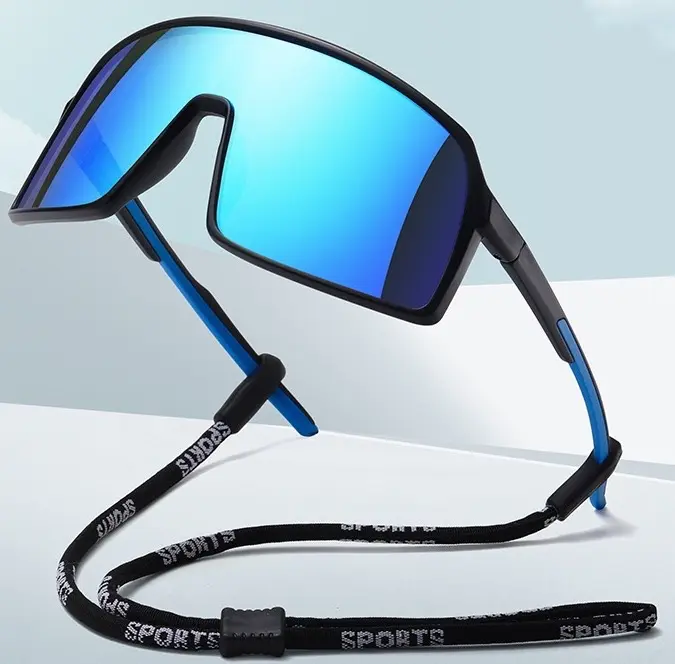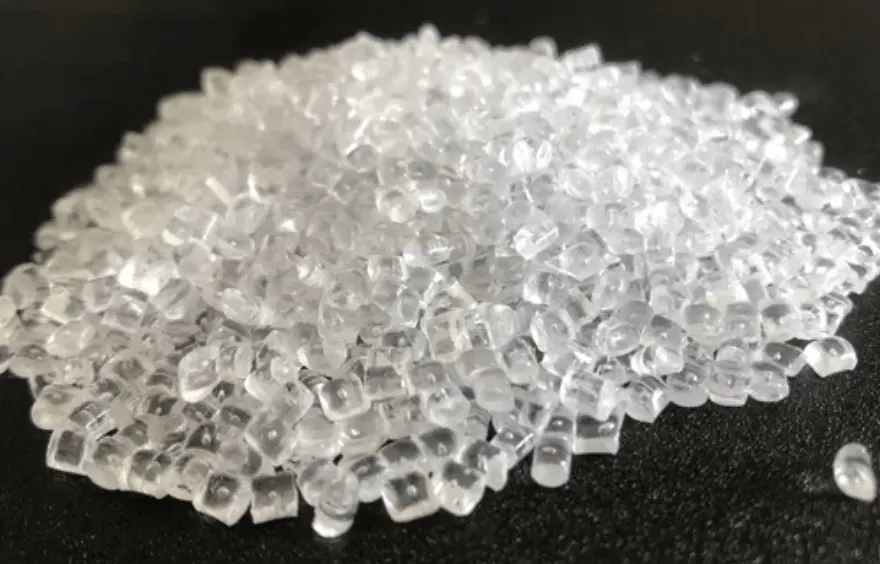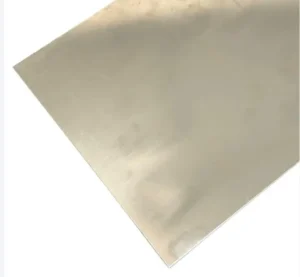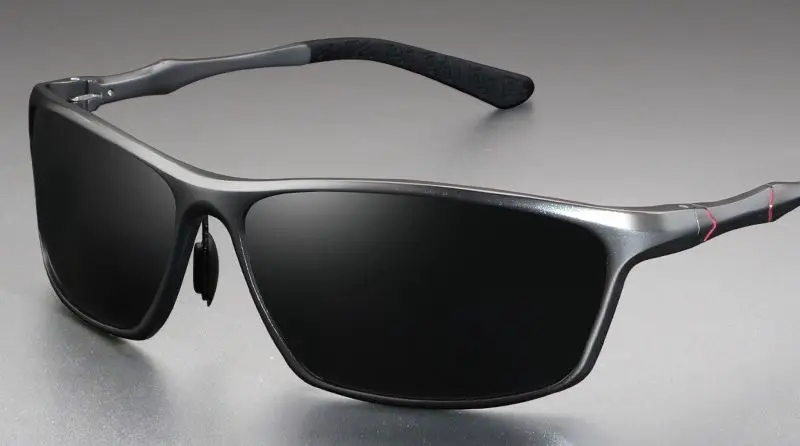What Are Glasses Made Of?
As technology grows, have brought many glasses materials for making glasses and sunglasses frames. This has made you and sunglasses manufacturers interested in ‘What Are Made Of.’
The guide offers an easy-to-understand overview of the materials used in modern glasses frames. It helps you understand glasses materials to make better choices and assists sunglasses manufacturers in making our products.
And using high-quality materials is key to making top-notch sunglasses and parts of glasses. Quality materials, known for their purity, flexibility, and clean colors, make glasses look and feel more luxurious. This is a standard that the best custom sunglasses manufacturers aim to meet.”
What materials are sunglasses made from?
Table of Contents
1. What Materials Are Luxury Glasses Frame Made Of ?
- Fine gold is 100% gold and not combined with any other metal. It is also known as 24 karat gold. The karat is a unit of fineness for gold. 24 karats = 100 percent gold content. Fine gold is too soft to be used in frames. It scratches and bends too easily to hold adjustment.

- Solid gold refers to a gold alloy. Another material must be mixed with the gold in order to add strength and durability. Therefore, solid gold means the item is less than 24 karat gold and 18k gold frame. For example, 12 karat gold means only half the material (12/ 24) is pure gold. Typical metals used in the alloy process are nickel or copper. Solid gold articles can appear different colors depending on the type of metal used in the alloy.
Pros: It is very good at holding an adjustment and it will not pit or discolor. This material is safe for people with metal allergies , Solid gold will retain its luster after many years of use.
Cons: however it has limited availability because of the high cost of gold. It is important to use caution when adjusting as the finish may be soft. Gold-filled frames are constructed out of a base metal and surrounded by a sleeve of gold alloy.
1.2 Luxury Glasses Frame made of Exotic Wood material
Exotic woods appear rich. They are seasoned for 2 years and oven dried before turned into eyewear. Wood eyewear is combined with metal for adjustability, but they should be treated like fine-crafted furniture. Be advised permits or certification may be needed for customs purposes.
Pros : Wooden glasses have beautiful patterns and a special feel, different from the smoothness of metal and horn. They are lighter in weight, and the commonly used wooden temple colors are generally more reddish, making the glasses more noticeable when worn, playing a finishing touch role, and attracting attention.
Cons : Wood lacks flexibility, making the glasses feel stiff when worn, and they may chafe the ears. The wooden temples look very beautiful when new, but over time, due to sweating and other factors, the color may become dull. Furthermore, if the wooden temples break, they are completely irreparable. Please be sure to take proper care of them.

1.3 Luxury Glasses Frame made of Natural Horns material
Natural horn has a smooth finish and natural patterns. Horn is from water buffalo, musk ox, and sometimes prehistoric mammoth. Natural horn is warm to the touch and hypoallergenic. Horn is not removed from the animal until after its’ natural death. Because it is a naturally occurring material, no two frames are alike. Be advised permits or certification may be needed for customs purposes.

Pros : Generally is Indian buffalo horn. The horn has high hardness, light weight, and a warm luster. Each pair of horn glasses will have a unique color and texture pattern, so when selecting horn glasses, it feels interesting, similar to choosing a jade bracelet. You can find your favorite color and pattern. Horn does not cause allergies or static electricity when it comes in contact with human skin, which is something that metal and plate glasses cannot replace. Moreover, horn glasses are completely handmade, finely crafted, relatively rare, and very precious.
Cons : Horn glasses have little adjustability. The temples and ear hooks of conventional metal and acetate glasses can be bent to a greater angle (acetate frames need to be heated, the metal glasses needs tools), but the horns cannot be bent. The curvature that comes out of the factory is what you will have to wear, you will hard to change it if it doesn’t fit; the ox horns needs regular maintenance, such as applying moisturizing liquids, otherwise, it can easily dry and crack; it is prone to damage from falls and once damaged, it cannot be repaired to its original condition, there will be repair traces.
2. What Material Are Plastic Frame Made Of ?
2.1 Plastic glasses frame made of handmade acetate material
Acetate is a type of thermoplastic that can be softened by heat and hardened by cooling. It’s made from renewable resources such as cotton fiber and wood pulp and comes in a wide range of colors and textures, with a smooth finish.
However, it should be noted that acetate can stretch, shrink, and become brittle over time, while exposure to UV light can cause fading of the color. It’s also important to avoid overheating the material, as this can cause pitting or burns, and may even loosen the frame hinges.
Overheating will loosen the frame hinges. The heat temperature should NOT exceed 160 degrees. Darker colored frames need less heat. Frames are “cold-milled” or pantographed. Frames can melt in high temperatures. Acetate is heavier than other plastic material. Acetate may exude plasticizers over time, leaving a milky film on the frame surface and can break if cold.

Pros : The cost is relatively low, the hardness is high, the texture is warm and smooth, it has strong wear resistance, and theoretically, it can be made in any color or pattern. It’s very beautiful and widely used, suitable for young people. Moreover, the acetate material has strong plasticity, which allows for the adjustment of the curvature and bend of the temples. Even the newly bought acetate glasses can be adjusted to fit the ears closely, which is better than other materials. It is also hypoallergenic and sweat-resistant, suitable for most skin types. If you are allergic to metals, then it is worth considering.
Cons : Over time, the acetate material will age and turn white due to sweat corrosion. Of course, this can be restored through polishing and refurbishing.
Finally, it’s worth noting that acetate is heavier than other plastic materials, and over time, it may exude plasticizers, leaving a milky film on the frame surface and potentially causing the frame to break if exposed to cold temperatures.
2.2 Plastic glasses frame made of TR90
TR90 is an injected thermoplastic. It is extremely flexible, durable, impact resistant, and lightweight. It is great for performance eyewear; however avoid alcohol as it may cause the frame material to crack. This material should also be labeled “cold insert only”.
Pros : It has high corrosion resistance, good flexibility, and light weight, which can reduce the burden on the nose and ears, making it suitable for teenagers. The price is relatively cheap and it can be printed with rich patterns.
Cons : The frame is difficult to adjust. If adjustment is needed, it is recommended to go to a professional store.

Carbon fiber is a mold injected combination of carbon fiber strands and injected nylon material. The material is black in color and must undergo a coloring process. It provides the strength and durability of metal in a plastic look.
Pros : It is extremely lightweight and super strong: 60 percent lighter than other materials. When using carbon fiber fronts, the eye rim must be screwed closed. Because adjustments to the eye rim curve cannot be made, the lenses must be cut to size and the correct base curve used.

Cons : No modification can be made to the bridge. It is impervious to heat, but heating will make it slightly more pliable. Depending on the coating applied to the frame, it may or may not be sensitive to chemicals such as acetone or alcohol.
Polycarbonate is an injected material with good UV absorption, impact resistance, and is lightweight. It is not adjustable and acetone should be avoided.
Pros : This material is lightweight, flexible, and generally comes with adjustable nose pads, making it resistant to paint chipping.
Cons : This material requires painting and demands high-quality paint spraying techniques.

2.5 Plastic glasses frame made of Cellulose Propionate material
CP injection is a mold injected thermoplastic that is lighter in weight than cellulose acetate. Frames can be designed thinner based on material strength. Colors are added as a secondary process. Color coating adds surface hardness to the frame, but colors may fade and the frame will become brittle over time.
CP is hypoallergenic. There is no memory so it will not return to its original shape if stretched. Heating above 105 degrees will cause irreparable damage. No acetone or alcohol as the surface coatings may be destroyed. Lenses must be cut to exact size as material will not stretch or shrink to accommodate.
Pros : It is inexpensive.
Cons : It is prone to shrinkage and deformation, and is too soft to be used for making thinner products.
Nylon is a thermoplastic polyamide material that is injection molded. Nylon is durable, lightweight, virtually unbreakable, extremely impact resistant, hypoallergenic, light and flexible. It is resistant to many solvents. Nylon is difficult to adjust. The material will dry out over time and it must be soaked in water weekly so it does not become brittle. The material will not shrink. Temples must have wire core in order to adjust.
Pros : Thermosetting environmental protection material, high hardness, good elasticity.
Cons : Very difficult to adjust.
2.7 Plastic glasses frame made of Epoxy Resin material
Epoxy resin is cast molded in clear, lightweight material with endless colors that are applied afterward. Optyl is thirty percent lighter than existing materials, it has memory and it is hypoallergenic. There is no need to use a wire core. Optyl has total memory.
When the frame is heated to 176 degrees it will return to its original factory molded shape. Overheating will not damage the frame. Frame adjustments are difficult without heat. The frame will crack if heated and submerged in cool water. Temples can be slightly lengthened by heating and pulling to stretch.
Polyamide is an injection molded hybrid nylon material with no plasticizers. Polyamide is hypoallergenic, resistant to chemicals and solvents, and lightweight. Polyamide material holds and maintains its shape in various temperature conditions.
It is strong and stable and has a good color range. Temperatures above 230 degrees will cause the frame to melt. Frames are colored by dying, which means colors can vary from lot to lot. NO ACETONE or the finish will be destroyed. Cold insert only.
3. What Material Are Metal Frame Glasses Made Of ?
Pure titanium is 99.5% titanium, 0.5% oxygen and nitrogen. It is nickel free, hypoallergenic, lightweight, strong, and virtually unbreakable.
Pure titanium is easily adjustable, but expensive: the price runs approximately 25% higher than other metal frames because it is difficult to mine, extract, and purify. This makes the raw material almost 3 times more expensive than nickel silver or Monel.
Titanium cannot be made into very thin profiles. Hinges made from titanium will have a visible washer. The material is very porous so it is difficult to color. Specialized equipment is needed to solder as temperatures must exceed 1200 degrees Celsius or must be soldered in an oxygen free vacuum.
Pros : This material is corrosion-resistant, less likely to cause metal allergies, resistant to deformation, durable, lightweight, and flexible. It’s usually labeled as “pure titanium” or “titanium” on the rim.
Cons : The material is a bit soft to make the spectacle frame more delicate. Only by making the lines thicker can the stability and strength of the frame be guaranteed.

Beta titanium is an alloy made up of 74%-75 % titanium, 15-22% vanadium (for hardness) and 4-10% aluminum (for lightness) and chrome. It is flexible and lightweight, nickel free, and non-corrosive. Beta titanium is hypoallergenic and can be made into slimmer profiles than pure titanium. Like pure titanium, the material is porous so it does not color easily.
Pros : This titanium material is another form of pure titanium and possesses benefits such as corrosion resistance and excellent malleability. It’s usually labeled as “β-titanium” on the frame.
Cons : However, this material is difficult to adjust, and has a higher processing difficulty.
3.3 Metal Glasses Frame made of Memory Titanium material
Memory metal is 40-50% in combination with nickel. It is NOT hypoallergenic, although it is corrosion resistant, lightweight, durable, and flexible. The frame will return to its pre-adjusted shape after being bent or twisted.
Pros : Memory titanium eyeglass frames are becoming popular for high-end eyewear because they are lightweight, durable, stable, and colorful. They are also biocompatible, meaning they are safe for human use. These frames have advanced technology and better features than regular frames.
Cons : It is difficult to adjust, and has a higher processing difficulty.
3.4 Metal Glasses Frame made of Nickel silver material
Nickel silver is 62% copper, 20% zinc, 18% nickel. It is most commonly used for end-pieces, decorative additions and hinges. Nickel silver is very rigid, which makes it brittle. It is too hard for eye wires and temples. Colored metals are made through electroplating to avoid tarnishing. Nickel silver is softer than monel and stainless steel.
Pros : This material (especially white copper) is inexpensive and easy to work with. The eyeglass frame is also easy to adjust.
Cons : This product is not high-end and often causes skin allergies. It’s also prone to developing copper rust.

Monel is 68% nickel, 30% copper, 2% iron, manganese, and zinc. Monel is the most common alloy used in frame making. It is strong and less corrosive than nickel. Monel is mainly used in eye wires because it holds adjustment well. It is also used as a stabilizing metal in frame bridges and end-pieces. Monel can be easily coated and colored. Not hypoallergenic.
Copper is stable and highly workable, but highly corrosive. It is rarely used alone. Copper is used to make Monel, Phosphor bronze, and copper beryllium.
Phosphor bronze is an alloy containing copper. It is flexible and ideal for thin temple cores and thin temples. It also has a high shine finish, but it must be plated, painted, or covered otherwise the metal will tarnish.
Cobalt is 78% Monel, 22% nickel. It is the strongest, most lightweight material and is noncorrosive. Cobalt has good adjustability, but is more difficult to adjust than other metals. It is used as a stabilizing interior metal on high quality frames. It is a silver-grey metal that resembles iron and nickel in appearance, properties, and behavior. It offers many benefits of titanium and steel, but it is easily colored, easy to solder and resists abrasion.

Stainless steel is a combination of Iron, nickel, chromium, and manganese. It is thin and sturdy, but still flexible. Stainless steel is corrosion resistant, strong, and hypo-allergenic.
Pros : This material is flexible, resistant to deformation, and lightweight. Its surface is treated with IP electroplating, which enhances its durability.
Cons : It is difficult to adjust, The frames may not look aesthetically pleasing with thicker lenses for high prescriptions. Also, frames with painted surfaces tend to chip easily and are less durable.
Aluminum is strong, lightweight, and corrosion resistant. The parts must be riveted, not soldered. It is difficult to adjust. Aluminum allows for large frame designs without discomfort. It can be colored by anodizing process so the color may not be exactly the same as electro-plating. The finish scratches easily.

Pros : This material looks shiny and attractive. The silver-white aluminum alloy frame makes the product look luxurious and beautiful. It’s also resistant to rust, sweat, and fading. It forms a protective layer that prevents corrosion and makes it durable. Additionally, the frame is lightweight and comfortable to wear.
Cons : Aluminum-magnesium alloy has lower strength and requires thick sheets of metal to be shaped under high pressure which limits its ability for creative design, making it more suitable for rigid and bold styles. The frames are too hard and cannot be adjusted, therefore, they can only be made with a spring hinge to fit different face widths.
4. What Material Are Lens Made Of ?
4.1 Photochromic Lenses -“Transitions”
Photochromic lenses are adaptive lenses that change from clear to tinted by UV activation.
Originally, polarized film was glued to the surface of the lens. Newer techniques sandwich the film between layers of the lens or the lens is cast with the film embedded. This causes a fixed tint and fixed polarization.
The newest technology is polarization happening on a molecular level inside the lens. Polarization offers glare protection from light bouncing off surfaces. Polarized lenses filter the waves of light by absorbing some of the reflected glare while allowing other light waves to pass through them.
The most common illustration of how a polarized lens works to reduce glare is to think of the lens as a Venetian blind. These blinds block light that strikes them from certain angles, while allowing light from other angles to pass through.

Polycarbonate has many applications such as auto parts, aircraft interiors, cameras, binoculars, compact discs, face shields, etc. Polycarbonate lenses are created by injection.
It is a softer plastic than CR39 so it must have coatings added to it to give it strength. It is tintable, although it does not accept tints as readily as CR39. Polycarbonate is impact resistant, lightweight, and blocks all UVB and UVA up to 300nm.
Polycarbonate may be impact resistant, but if pressure is applied, it is known to crack or craze. The optical quality of polycarbonate lens is poor, with many distortions. Not compatible with acetate frames.
4.4 Glass Lens
Glass is comprised of heated sand and other material such as soda, lime, or potash. That is melted and poured into molds, then pressed into shape. After it is molded, the glass will be annealed (heated and cooled over a period of 4 hours or more to remove stress created during molding process). Glass is transparent and brittle, but offers the best optical properties. It must be strengthened by heat treatment or chemical treatment.
CR39 starts as a liquid monomer and is mixed with a catalyst that will cause it to form into a solid material. The liquid material is filtered and degassed and poured into molds, then cured in an oven. The lenses are cast. CR39 is highly tintable and has optical qualities better than PC but not as good as glass. Compatible with zyl frames.

Clear acrylic lenses are 1 mm in thickness and are used for demonstration lenses in optical frames. In sun, the acrylic must be thicker in order to pass the drop ball test. Acrylic lenses are not suitable for Branded sunglasses.
Triacetate cellulose can be made as a fixed tint, fixed polarized, or a clear lens. This lens material comes in various thicknesses, but may fail CE standards for optics.

4.8 Nylon Sunlens
Nylon lenses are used primarily for metal frames with no rim locks and 3-pc mounts to avoid crazing, chipping, and cracking.
5. Sunglasses Material Analysis of High-end Popular Glasses Brands
To produce high-quality glasses with exceptional feel and visual appeal, top-notch materials are crucial. Different brands have their own market positioning and make deliberate choices about which materials to use for manufacturing their eyewear lines.
Sometimes, the selection of materials is also dictated by the glasses’ structure. For instance, we need to take into account factors like the strength of the glasses, their weight, and the stability of parts production. All these factors are considered based on the eyewear’s structure.
5.1 What glasses are made of ?
Dita brand glasses are very particular about the materials used. Only the selection of materials and high-tech manufacturing can produce high-quality glasses.

- Rimless Frame Construction With Custom Titanium Brow Bar And Nose Bridge
- 100% Uva And Uvb Nylor Lens With Anti-Reflective Coatin
- Custom Titanium Temple Hinge Plate
- Custom Titanium Nose Pads With Diamond Pressed Detail
- Hand Made Acetate Temple Tips
- Dita’S Unique Hex Screw Hinges


Come, let’s take a look at this visually stunning pair of Maybach Glasses. Every detail communicates that these are top-tier, high-quality sunglasses. The meticulous patterns, seamless integration of components, and the 3D and glossy feel truly make them a delight to see.

- Pure titanium with an exclusive surface finish in gold or
platinum is light, hardwearing and elegant, as well as being
an excellent choice for allergy sufferers.
- Fine wood is integrated in the frame by seven ultra-fine
veneers bonding into a single piece, each being unique in
its colors and qualities.
- Only the finest and most elegant
woods are hand-selected and finished by glowing under 8
coats of piano varnish.

6. Our advice on choosing the best eyeglass frame materials
When considering which materials to use for manufacturing your eyewear brand, you should take into account the following factors and consult with a reliable and professional eyeglass manufacturer when necessary:
- Target audience: The first step in establishing your brand is identifying your target market and understanding their preferences, needs, and budget. This will help you select eyewear materials that cater to their specific requirements.
- Durability: Opt for materials that offer long-lasting durability and can withstand daily wear and tear, especially for very active components such as hinges, temples, and lenses.
- Comfort: Choose materials that provide comfort, lightweight, and hypoallergenic properties, especially for those with sensitive skin or allergies.

- Style and design: Select materials that complement your brand’s design aesthetic and enable you to create a wide range of styles and designs.
- Manufacturing process: Consider the ease of manufacturing, stability of parts dimensions and shapes, availability of materials, and the environmental impact of the production process.
- Cost-effectiveness: Balance quality and cost to ensure your glasses are priced competitively without compromising quality. This factor is crucial and depends on the professionalism of your eyewear manufacturing partner; ensuring that quality requirements are thoroughly communicated and exquisite workmanship is implemented.
- Sustainability: Opt for environmentally friendly materials and production methods, as consumers are increasingly concerned about the ecological impact of the products they purchase.
By taking these factors into consideration, you can make informed decisions about the materials best suited for your eyewear brand.
Finally, I believe you already know “what glasses are made of” and how to choose the best glasses material, congratulations. You are also welcome to join our discussion.